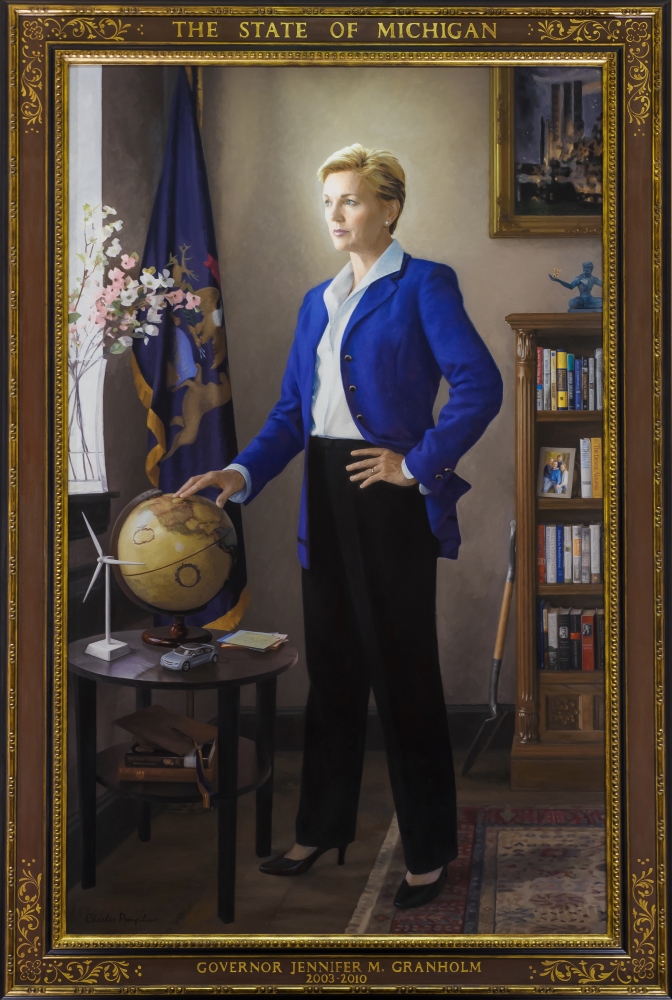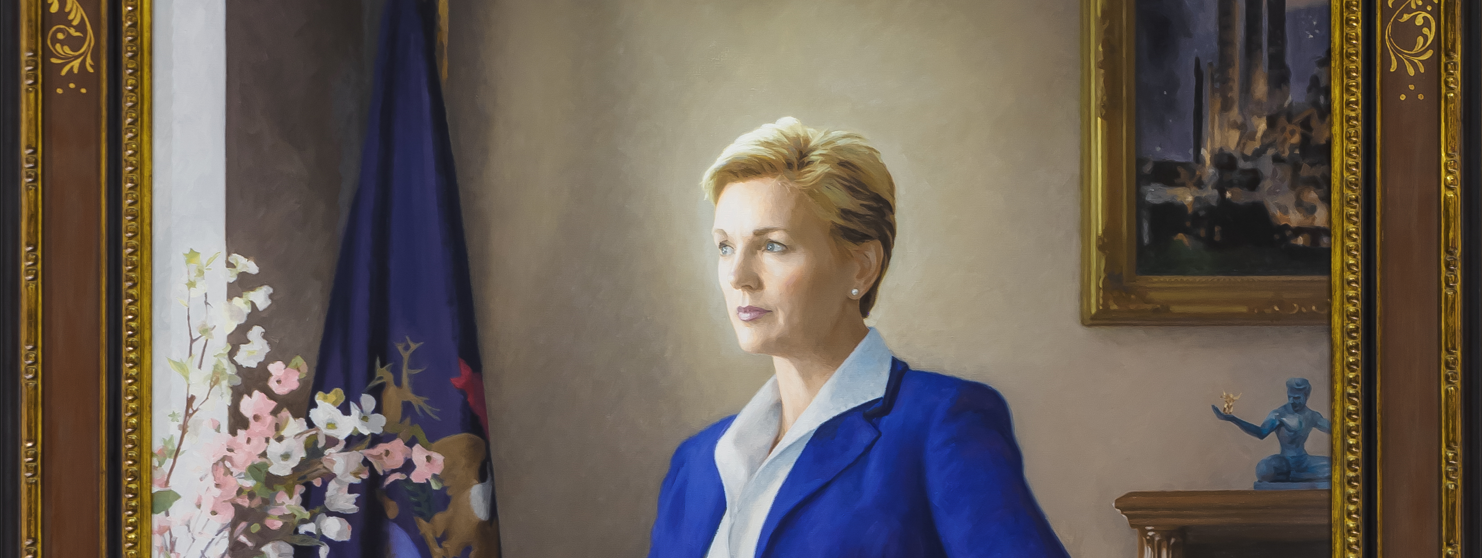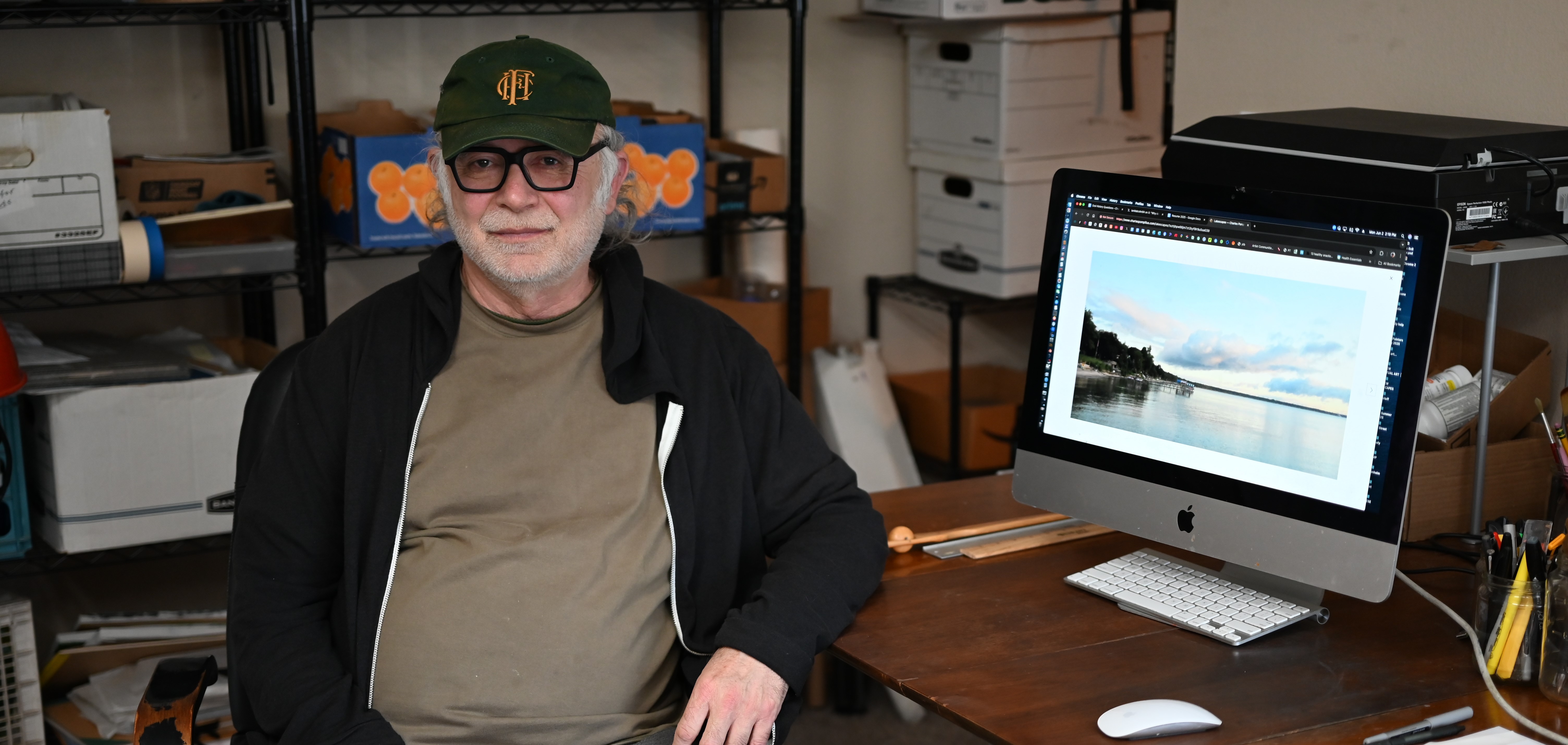
Charles Pompilius is one of only four living artists represented in the Capitol’s portrait collection. His portrait of Governor Jennifer Granholm was unveiled in 2011 and now hangs on the second floor of the Capitol, in the rotunda’s Gallery of Governors.
Recently, our Art Registrar Shayla Croteau visited Pompilius in his studio to learn more about his portrait of Governor Granholm. Their discussion brought to light several new facts about the artwork, including hidden symbolism and stories about the artist’s creation of the piece.
The portrait of Governor Granholm stands out amongst others in the rotunda for two main reasons: her powerful, commanding stance and the plethora of symbolic objects that surround her. As Michigan’s first female governor, Granholm was aware that her portrait would be inherently unique. Pompilius relayed that she specifically asked for a strong pose, which would portray her as a leader. He stated, “She wanted to be shown like someone who was governing, and she was.” Granholm also opted for a suit, rather than a gown – a request with which Pompilius complied, painting her in a sharp blue blazer, a collared white blouse, black dress pants, and heels.
Several objects are placed throughout the scene around the governor, each of which nods to an achievement or value that she held while in office. While Capitol Educators know the basic facts about why each object is included – such as the wind turbine and electric car, which acknowledge the governor’s push for alternative energy sources – it was enlightening to hear Pompilius discuss the objects from his point of view, as the man who painted them.
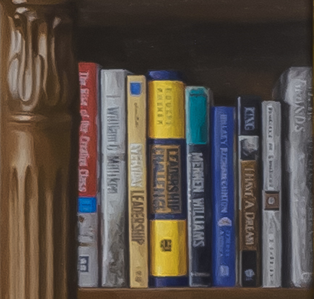
For example, Pompilius noted that the most challenging part of the painting was creating the bookshelf at the right of the scene. He explained that Governor Granholm provided him with a box of books, each of which was specifically chosen to be included in the portrait, and asked if he could create a bookshelf filled with them. He recounted painting the title delicately onto the spine of each book, at an angle, while on a ladder. He also admitted, rather sheepishly, that he sometimes had to become creative to reach far away areas of the large canvas, which he had hung up on a wall to paint. “In one case, I just remember precariously sitting on top of a stool, that was on top of a table ... it was a little risky, but I lived. I did not fall.”
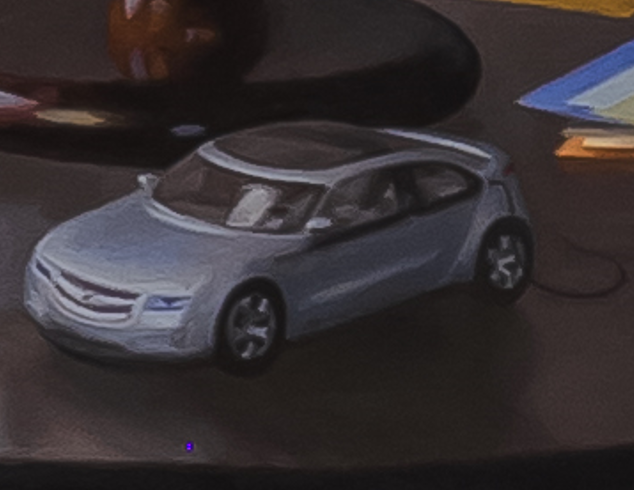
Pompilius also discussed the Chevy Volt – the small, electric car on the table beside the governor. He explained, “If you look very closely… she wanted a black cord coming out of it to show that it was a plug-in electric car.” Sure enough, a discerning eye will notice a tiny black cord coming out of the vehicle. Pompilius also pointed out the graduation cap just below the car, divulging that it was actually the cap used by his son, who graduated from Ferndale High School.
Perhaps the most exciting revelation about the piece was the artist’s personal connection to the small painting in the top right corner of the canvas. The painting, which depicts the Ford River Rouge plant, was included to reference Michigan industry. It also holds a distinctive place in Pompilius’ own history, however, as he worked in the plant as a college student.
Discovering connections like these reinforces the benefit of completing oral history interviews with notable Capitol figures like our portrait artists. While we enjoy research, having the opportunity to sit across from an artist and hear them talk about their work in real time is a unique and incredibly valuable experience.
-Shayla Croteau, Capitol Art Registrar
